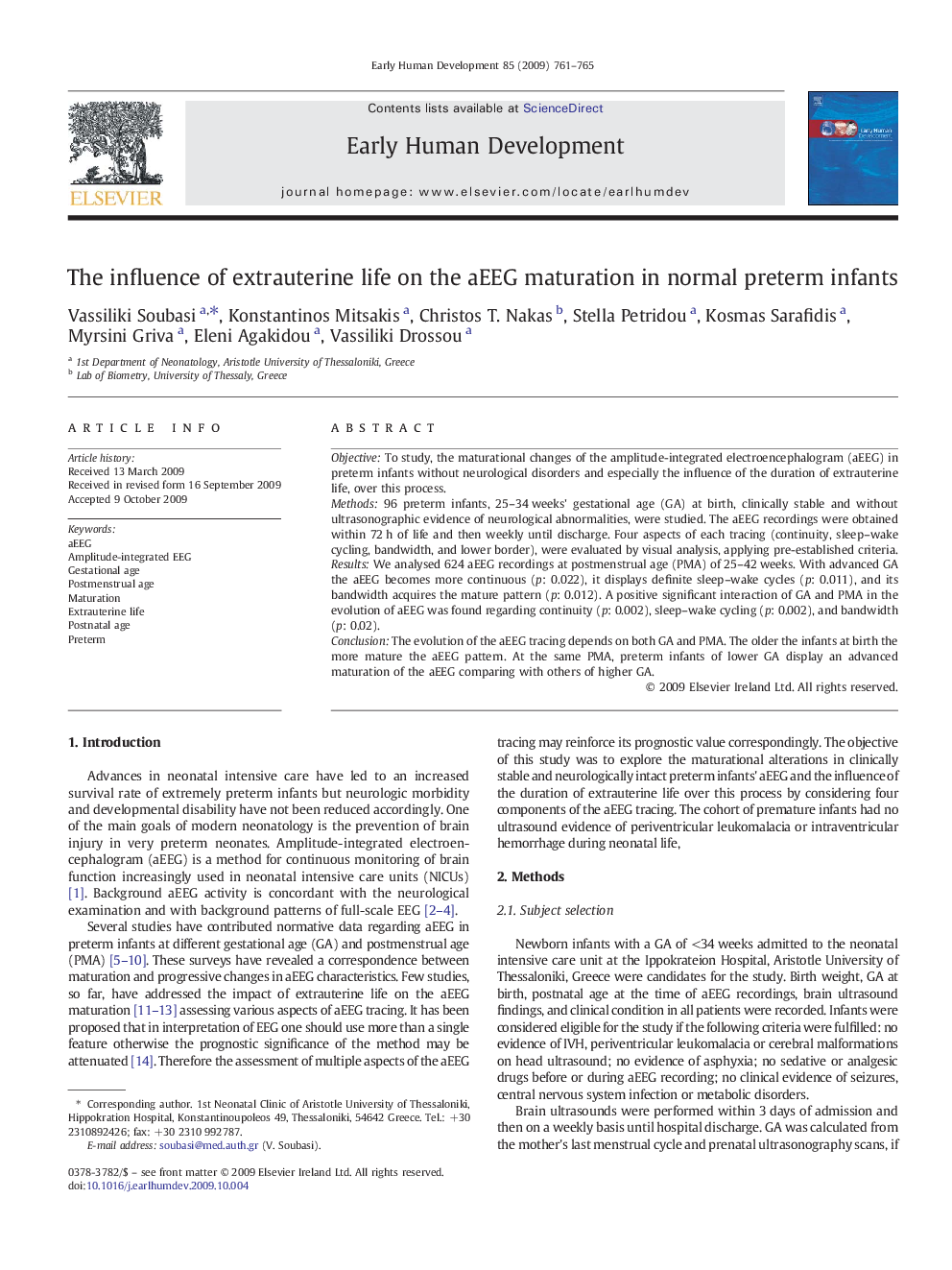| Article ID | Journal | Published Year | Pages | File Type |
|---|---|---|---|---|
| 3917911 | Early Human Development | 2009 | 5 Pages |
ObjectiveTo study, the maturational changes of the amplitude-integrated electroencephalogram (aEEG) in preterm infants without neurological disorders and especially the influence of the duration of extrauterine life, over this process.Methods96 preterm infants, 25–34 weeks' gestational age (GA) at birth, clinically stable and without ultrasonographic evidence of neurological abnormalities, were studied. The aEEG recordings were obtained within 72 h of life and then weekly until discharge. Four aspects of each tracing (continuity, sleep–wake cycling, bandwidth, and lower border), were evaluated by visual analysis, applying pre-established criteria.ResultsWe analysed 624 aEEG recordings at postmenstrual age (PMA) of 25–42 weeks. With advanced GA the aEEG becomes more continuous (p: 0.022), it displays definite sleep–wake cycles (p: 0.011), and its bandwidth acquires the mature pattern (p: 0.012). A positive significant interaction of GA and PMA in the evolution of aEEG was found regarding continuity (p: 0.002), sleep–wake cycling (p: 0.002), and bandwidth (p: 0.02).ConclusionThe evolution of the aEEG tracing depends on both GA and PMA. The older the infants at birth the more mature the aEEG pattern. At the same PMA, preterm infants of lower GA display an advanced maturation of the aEEG comparing with others of higher GA.
